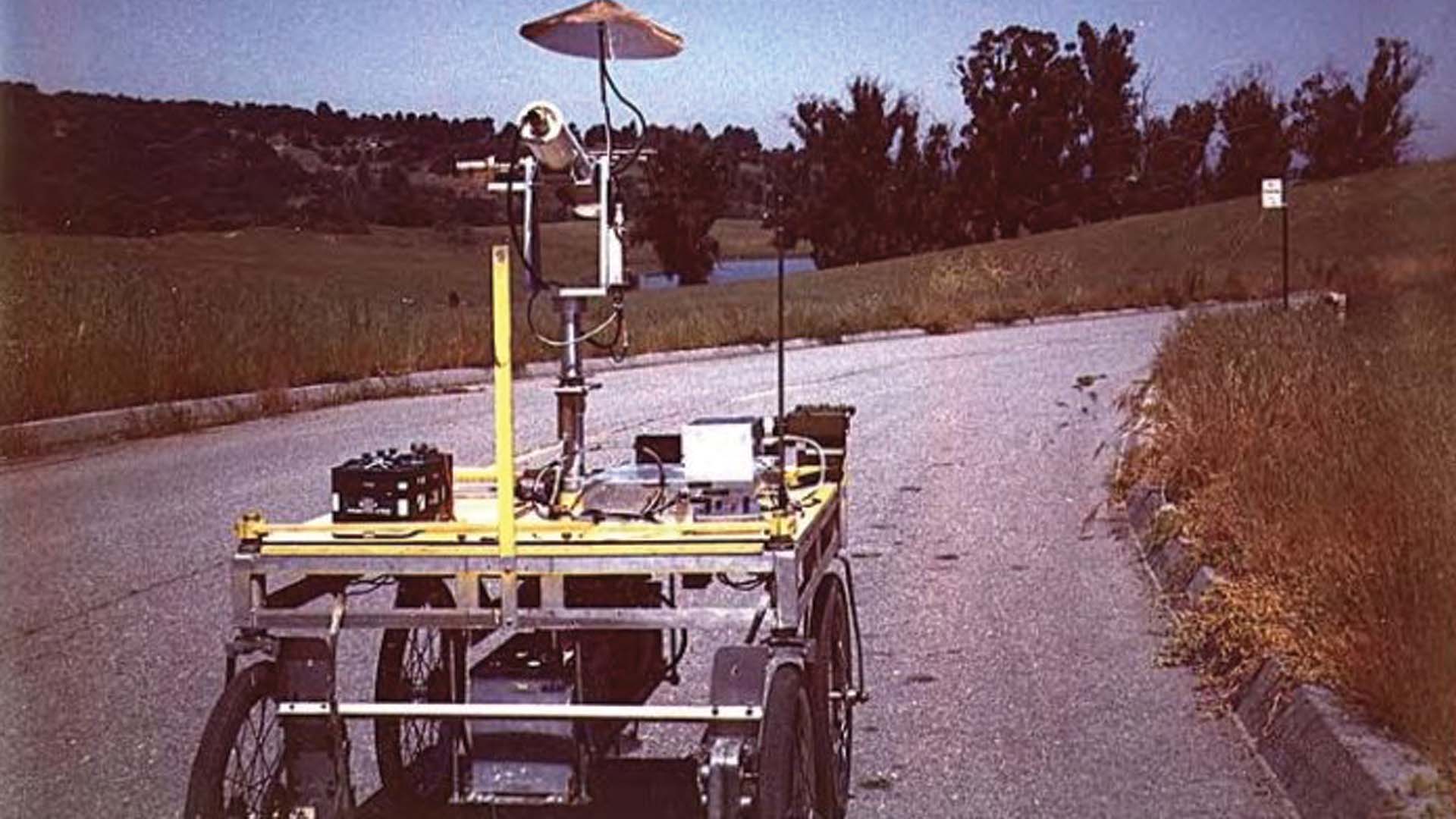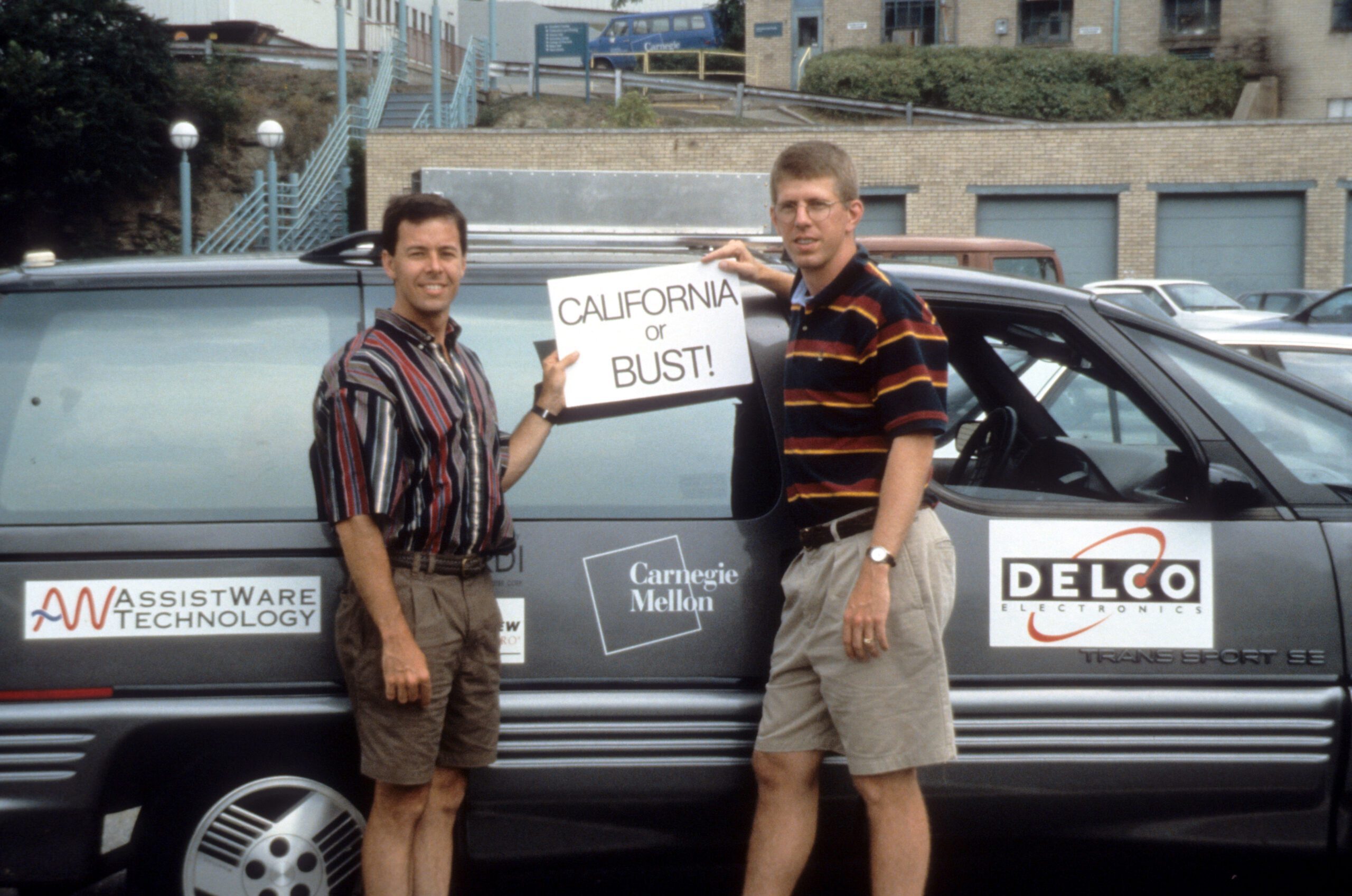The race for commercial autonomous cars is well on its way between major companies and research institutions. They have the potential to massively alter how we view and use transportation. But how did we get to this futuristic innovation that at one point seemed completely impossible?
The 1500s
We know what you’re thinking– autonomous cars in the 1500s? Yeah, right! But believe it or not, the first idea of the autonomous car was actually designed centuries before the first car. In the 1500s, Leonardo da Vinci created a cart that could move without being pushed or pulled. Springs under high tension provided power, and steering was set in advance so the cart could move along a predetermined path. This device is sometimes also referred to as the world’s first robot.
The 1900s

In 1925, inventor Francis Houdina demonstrated a radio-controlled car through the streets of Manhattan without anyone at the steering wheel. The radio was able to start its engine, shift gears, and sound its horn. This car offered a glimpse into the future of autonomy but was quickly shut down when the operator lost control twice during the ride and crashed into another vehicle. Despite this early mishap, the industry did not give up hope on remote-controlled cars.
At the 1939 World’s Fair, General Motors created the first self-driving car model. It was an electric vehicle guided by radio-controlled electromagnetic fields and operated from magnetized metal spikes embedded in the roadway. This model turned into a reality in 1958. The car contained sensors that could detect the current flowing through a wire embedded in the road. The current could be manipulated to move the steering wheel left or right.

At the height of the space race in 1961, researchers began contemplating how to land vehicles on the moon. As a result, James Adams created the Stanford Cart, fitted with cameras and programmed to autonomously detect and follow a line on the ground. This was the first use of cameras in autonomous vehicles—a vital element in autonomous vehicles today.
In 1977, the Japanese improved on this idea with a camera system that relayed data to a computer to process images of the road. This led to the testing of the world’s first self-driving passenger vehicle which could reach speeds up to 20 miles per hour.

By 1990, Carnegie Mellon University began building self-driving cars, integrating neural networks into image processing and steering controls. In 1995, Carnegie Mellon researchers took their self-driving car, called NavLab 5, to the road, traveling 2,797 miles from Pittsburgh to San Diego. They controlled the speed and braking, but the car was otherwise autonomous.
The 2000s-Today
By the early 2000s, the autonomous car industry was in full swing. The U.S. Department of Defense’s research arm, DARPA, sponsored a series of challenges to expedite autonomous cars. In 2004, they held a competition to challenge vehicles to self-navigate 150 miles of desert roadway. No cars completed the route. In 2007, the challenge simulated a 60-mile long urban environment; this time four cars completed the route.
By the mid-2010s, major car companies like Ford, Mercedes-Benz, and BMW, as well as rideshare programs like Uber, began throwing their hat in the ring with self-driving technology. However, true autonomy proved to be more difficult to achieve than originally thought, and many of these companies eventually ended their operations. Notably, in 2020 Uber announced that they were backing down from their attempts at self-driving cars as a result of safety, lawsuits, and a loss of money.
As of 2021, the closest company to put autonomous cars on the market is Tesla with their Full Self-Driving package, enabling autonomous hands-free control for highway and freeway driving. However, the cars are not autonomous by any means of measurement. In fact, the German government even asked Tesla to stop using this term.
Even amongst these breakthrough innovations, there are no fully autonomous vehicles commercially available for purchase. However, there are currently hundreds of autonomous vehicles already working in major industries like mining. As of May 2021, Caterpillar’s autonomous trucks safely hauled over 3 billion tonnes of material in just 7 years of operation. The success of autonomous vehicles in the mining industry gives some hope for the obstacles faced with autonomous cars.
Watch autonomous vehicles in action on Tomorrow’s World Today’s “Empty Driver’s Seat,” streaming HERE.





